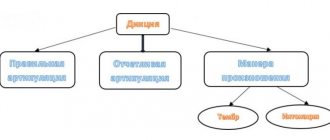A well-trained voice is needed not only by professional vocalists. It is necessary for anyone who wants to get the maximum effect from communication.
After all, a person’s voice can influence listeners twice as much as the meaning of his message. In addition, people with pleasant voices are perceived by others as more successful and attractive.
In this article you will find exercises that will help you sound great.
To open your voice
Your voice may not actually be yours. The reason is due to tension or an incorrect way of speaking (for example, using only the ligaments). The exercises below will help you overcome these issues and discover your true natural voice.
Sound engineer
First, understand how others hear you. To do this, you can simulate a recording studio. Your left palm will be the earphone - press it with a “shell” to your left ear; the right one will be a microphone - hold it near your mouth at a distance of several centimeters. Start trying: count, say different words, play with the sound. Do this exercise for 5-10 minutes for nine days. During this time, you will understand how your voice really sounds and you will be able to improve it.
Q-X
To open your voice, you need to free your throat and transfer the main work to your lips and diaphragm. To do this, pronounce the syllables “qu-ix”. On “Q,” round your lips; on “X,” stretch them into a wide smile. After 30 repetitions, try making a short speech. You will feel that the ligaments are less strained, and your lips follow your commands better.
Yawn
The easiest way to relax your laryngeal muscles is to take a good yawn. Do this simple exercise for 5 minutes a day and you will notice how blocks and tension in your voice disappear.
Exhale-groan
This exercise will help you discover the natural sound of your voice. Its essence comes down to voicing your exhalation.
Position: feet on the floor, jaw slightly open and relaxed. Start inhaling air, and as you exhale, make any sound. Do this without any effort - if everything is correct, you should get a groan.
When the exercise is performed correctly, the sound comes from the solar plexus. It is from there that you need to speak so that your voice is voluminous and expressive.
Who needs voice training?
Voice training is necessary for everyone whose profession is related to communications and other ways of using the vocal apparatus. And these are not only public people and representatives of creative professions!
Professions that require mandatory voice skills:
- Theater and film artists.
- Dubbing and voice over actors.
- TV and radio presenters.
- Newscasters.
- Singers and vocalists.
- DJs and event hosts.
- Presenters of seminars, trainings and online streams.
- Politicians.
- Speakers and stands.
- Teachers of schools and universities.
- Conference speakers.
- Scientists.
- Directors and top managers.
- Sales managers.
- Call center operators.
If you imagine yourself in any of the listed professions, you should take up voice training and learn to speak beautifully. And at the same time, do not get tired and do not expose your vocal cords to overload.
To make your voice pleasant
The following exercises will make your voice more harmonious.
Three smiles
This exercise is performed in the same way as the previous one, but observing the rule of three smiles. Smile with your mouth, forehead and imagine a smile in the solar plexus area. After this, begin to exhale with sound. Just 5 minutes a day - and your voice will begin to sound more pleasant and trusting.
Yoga exercise
This training is practiced by Indian yogis to achieve a deep and beautiful voice.
Position: standing, feet shoulder-width apart. First, take a few calm breaths and exhalations, then take a deep breath and exhale sharply with the sound “ha-a.” The exhalation should be as full and loud as possible. In this case, the body can be slightly moved forward.
Long syllables
Take a deep breath, and as you exhale, say protractedly “bom-m”, “bim-m”, “bon-n”. Draw out the last sounds as long as possible. Ideally, vibration should occur in the area of the upper lip and nose.
A similar exercise can be done with the syllables “mo-mo”, “mi-mi”, “mu-mu”, “me-me”. But in this case, first pronounce them briefly, and only then protractedly.
Both exercises are best done every morning for 10 minutes. They will not only make your voice more pleasant, but will also help strengthen your vocal cords.
Long tongue
Stick out your tongue. First, point it down as far as possible, trying to reach your chin. Maintaining this position, tilt your head down. Then stretch your tongue upward, trying to reach the tip of your nose. At the same time, raise your head as high as possible.
What is voice production
Voice training is the development of the vocal apparatus for use for ambitious professional and personal goals. As a result, the vocal apparatus begins to easily withstand heavy loads without harm to the vocal cords, and the voice acquires a special sound, richness of timbre and a wider range.
What does voice training give:
| 1 | Adaptation to heavy loads on the voice (work of a teacher, lecturer, presenter, etc.) |
| 2 | The ability to control your voice according to the situation (make it higher or lower, louder or quieter, more emotional or calmer). |
| 3 | Getting rid of tensions (physical and psychological). |
| 4 | Getting rid of minor speech defects and partially masking large speech defects. |
| 5 | Beautiful sound. |
| 6 | Range extension. |
| 7 | Enrichment of timbre. |
These arguments are quite enough for everyone to start voice training. However, there are areas of activity where a beautiful and well-produced voice is not a whim or a hobby, but a production necessity.
To make your voice stronger
These exercises will give your voice strength and energy. You will begin to sound louder and more powerful.
Sounds “i”, “e”, “a”, “o”, “u”
Exhale, then take a deep breath and on the second exhale say a long “i” sound. Do this freely as long as you have enough air. Do not force the air out of your lungs. Pronounce the remaining sounds in the same way: “e”, “a”, “o”, “u”. Perform three repetitions.
The sequence of these sounds is not random: they are distributed in height. Accordingly, “i” is the highest (activates the upper area of the head), “u” is the lowest (activates the lower abdomen). If you want to make your voice lower and deeper, practice the “u” sound more often.
Tarzan Exercise
Complete the previous task, only now beat yourself in the chest with your fists, like Tarzan. The exercise is designed to fill your voice with energy and clear your bronchi, so if you feel like clearing your throat, don’t stop yourself.
Moo
This exercise activates the chest and abdomen. Exhale and inhale. On the next exhalation, begin to pronounce the sound “m” with your mouth closed. Perform three approaches: first moo quietly, then at medium volume and finally at very loud volume.
Growl
Raise your relaxed tongue to the palate and begin to pronounce the sound “r”. It should turn out “r-r-r”, like a tractor. Repeat the exercise three times, then expressively read about a dozen words that contain the sound “r”. Be sure to accompany the reading with a rolling “r”.
A simple growl will not only give your voice strength and energy, but will also improve your diction.
How to learn this?
You can learn basic techniques that will make your voice better on your own. This is precisely why we have prepared our course, which will help increase the power of your voice, improve your voice for speech, for singing, for everyday communication and professional activities. This program is equally suitable for adults and children, for men and women without age restrictions.
To achieve a positive result, you should consistently go through all the lessons of the course, master the program and perform the exercises. Be sure to pay attention to the recommended didactic material, because there you will find more detailed, detailed explanations on all the topics covered in our course.
If you follow all the recommendations for improving your voice, you will notice changes for the better even before finishing our course. The most important thing is to record the sound of your voice before starting the program and after completing it - this way you will definitely have no doubt that changes for the better are obvious. To do this, you can use the voice recorder in your mobile phone and read any text or poem, sing a song or ditty.
In ancient times, people had to resort to the most sophisticated tricks to master the elements of producing a beautiful voice: speaking with stones in your mouth to improve diction, hanging a sword over your shoulder to wean yourself from unnecessary shoulder movements, etc. You are much luckier : you can achieve results using much more humane methods, because we are entirely for the safety of your teeth and mucous membranes, skin and nerve cells.
Of course, if you want to reach the highest professional level of acting, after completing our course you will definitely need to continue voice training. However, you can take the first step right now!
Chaliapin's exercise for tuning your voice
The great Russian singer Fyodor Chaliapin also began every morning with a growl. But he did not perform it alone, but together with his bulldog. After training the sound “r”, Fyodor Ivanovich began to bark at his pet: “av-av-av”.
You can repeat Chaliapin’s exercise or, if you can’t relax your larynx, replace it with a villainous theatrical laugh. This is done simply. With your mouth open, as you exhale, you laugh evilly: “a-a-a-a-ha-ha-ha-ha-a-a-a-a.” The sound should come out easily and freely. At the same time, you can jump and beat yourself in the chest with your hands. This exercise will instantly clear your voice and prepare it for work.
Lessons and course structure
To make it easier for you to achieve the desired result - a beautiful voice and intelligible speech - we have developed a step-by-step system for mastering all the knowledge necessary for this. This is why we recommend going through the lessons sequentially, without jumping from one to another. If the topic seems familiar to you, just in case, still read the material to make sure that you did not miss anything when you addressed this topic under other circumstances. And now more about the lessons themselves.
Lesson 1. How sound and voice work: physics and anatomy
The purpose of this lesson is to understand what sound, voice and speech are from the point of view of physics and anatomy. To achieve a positive result, you need to understand both aspects. Knowledge of anatomy will help you learn how to control your voice, and understanding the physical foundations of sound will help you visualize the results of classes and control the correct sound production.
Lesson 2. Characteristics and properties of the voice. How you can influence them with your voice
The purpose of this lesson is to study the basic characteristics and properties of the voice and learn how you can influence its characteristics so that it sounds beautiful. In this lesson we will look at the basic steps in voice training in order to develop a beautiful sound, namely working on breathing, diction, articulation and resonators.
Lesson 3. Diction and articulation
The purpose of the lesson is to analyze the main components of diction and exercises to improve them. We will study recommendations for improving diction from the recognized master of stage speech, the great director of the era, Konstantin Sergeevich Stanislavsky. We will also briefly examine methods for correcting the most common diction defects, which are offered by practicing speech therapists.
Lesson 4. Intonation
The purpose of the lesson is to learn to intonate and express various emotions using intonation, to reinforce important points in your speech, to indicate the end of one thought and the transition to the next. We will study different types of intonation and learn how to put them into practice using special exercises.
Lesson 5. Voice timbre and pitch
The purpose of the lesson is to learn how to control the pitch and timbre of the voice, convey various emotions using pitch and timbre, and make accents with the voice. In this lesson we will study different types of timbre, the dependence of voice pitch on timbre and understand how to use this in practice.
Lesson 6. Volume and strength of voice
The purpose of the lesson is to increase the strength of your voice, learn how to control volume, and achieve a sound in which you can be heard perfectly no matter how loudly you speak. In this lesson we will figure out how to make your voice loud and strong, how to make your voice quiet but audible, and how to use this in everyday speech and public speaking.
Lesson 7. Singing and vocal art
The purpose of the lesson is to gain an understanding of vocals, vocal techniques, vocal techniques and vocal embellishments, and to become familiar with the basic ways of practicing singing techniques. In this lesson we will look at types of vocals, vocal techniques and techniques, vocal embellishments, and also try to master those that will be available to you, taking into account your level of training and the knowledge that you will receive in lessons No. 1-6.
Lesson 8. Problems with voice and speech
The purpose of the lesson is to study the most common problems with voice and speech and develop a set of measures to, if possible, avoid them or correct them. In this lesson we will look at the most well-known disorders and pathologies of the vocal apparatus and speech organs, and introduce you to professional advice on what to do in this or that case.
And now a little more about how to take this course.
Main causes of speech problems
It is impossible to achieve positive results in the development of diction if you do not understand the causes of speech disorders. Only rarely are they associated with health problems and develop, for example, due to an abnormal jaw structure or a short frenulum of the tongue.
For many people, speech problems are caused by incorrect pronunciation of whistling and hissing sounds, as well as the absence of the “L” or “R” sounds, or a violation of their pronunciation. A weakened articulatory apparatus may also be the cause.
Even if a person can speak well, pronouncing all sounds correctly, in particularly significant situations his speech may become slurred and unclear. After all, when pronouncing words, the articulatory apparatus needs to very quickly switch from one movement to another. This can only be achieved through active and intensive work of the muscles that need to be trained, for example, by regularly pronouncing tongue twisters for diction.
However, the main reason for slurred, quiet speech is a person’s shyness and lack of self-confidence. In such a situation, the development of diction is a secondary problem. First of all, you need to work on your own character and fight complexes.
What does speaking technique give?
- Voice endurance
- Confident voice that conveys a feeling of reliability and trust
- Managing distance with listeners
- Influence by voice (verbal influence)
- Clear and clear pronunciation reduces the time it takes listeners to perceive information, which means it saves time and increases the effectiveness of speech action
Speech is a tool with which we can influence other people. Training (course) “Speech Technique” is a high-quality adjustment of the sound of your speech.
Additional materials
To better assimilate the material and more conveniently find more detailed information on issues that you would like to study in more depth, we have prepared a list of additional materials for you.
Books on voice and speech development:
- S. Riggs, “How to Become a Star”
- K. Stanislavsky, “The Actor’s Work on Oneself”
- E. Tsaregorodtseva, “Technique of stage speech: speech problems and their solutions”
- E. Shestakova, “Speak beautifully and confidently. Voice and speech production"
- E. Boyarchuk et al., “Anatomy, physiology and pathology of the speech organ”
- A. Akhmetzyanova, T. Korniychenko, L. Suzdaltseva, “Speech therapy atlas”
- V. Emelyanov, “Voice development. Coordination and training"
- E. Bryzgunova, “Sounds and intonation of Russian speech”
- O'Connor, G. Arnold, Intonation of colloquial English
And finally, a little motivation to make it easier for you to start studying the course.











